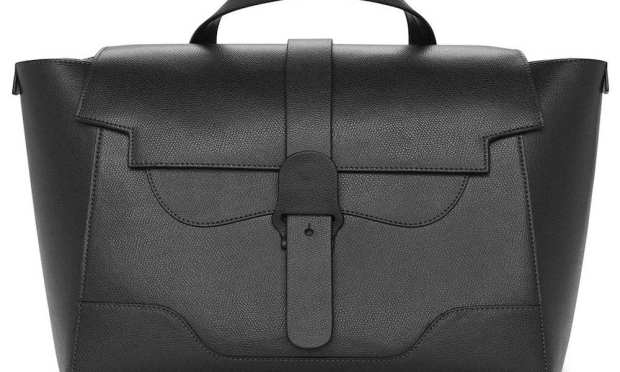Making Everyday Function Luxurious

How many handbags the average woman owns is a matter of some debate. On the low end the estimates are around five, and upper-end estimate seem to fall at 11. Whatever the actual number, it is fair to say two things. First, the handbag industry as a whole is thriving — over the last five years the global handbag and purse manufacturing industry has grown by 3.2 percent to a value of $167,000 billion. Second, the average American woman probably owns far more handbags than she regularly carries.
There are, of course, handbag collectors with purse counts in the thousands, but even among more average consumers, data and anecdotal evidence suggests women own many handbags, but tend to favor one larger daily use bag. And as one fashion columnist for Forbes noted, that master bag is somehow usually the worst one.
“It is the least stylish out of the many other purses in our wardrobes,” Bianca Songa writes, noting that there may be events were sleek, small stylish purses will do, but for day-to-day reality, everyone reverts to “the ever reliable work bag where, pretty much, everything you need to get through is contained.”
It was the desire for a stylish and functional version of that bag for modern women workers that drove Senreve founders Coral Chung and Wendy Wen into business in 2016 after a scan of the market revealed that the bag they wanted to buy and sell essentially wasn’t out there in any form.
“It’s really an art-meets-science process. ‘Senreve’ means ‘sense and dream’ in French. It’s this whole idea that you can have a luxurious fantasy bag with the versatility of everyday use,” Chung told The Observer.
The firm’s signature product, the Maestra bag, is that kind of offering. Meant to be worn in three ways, crafted in leather and incredibly popular among its rabid fanbase, the modern update to the laptop bag is the design innovation the brand is best known for — although these days it offers a fairly wide line of handbag designs.
The Maestra, however, was the product more clearly and completely designed for working women as a daily use item created, according to Chung, to first and foremost be functional.
“To most women, a functional bag means it can be used throughout the day on different occasions. So we decided on a classic and minimalistic look, season-less and neutral colors, feet on the bottom and very stain- and water-resistant leather,” she said.
And though the function is build in at the design level, the idea is not to merely roll out a functional offering; the bags are also intended to be luxurious and beautiful. They are also priced to that point — the signature bag retails for $700 to $900, other than the occasional sample sale. That means the purchase is going to be an investment, particularly for the younger consumers Senreve is hoping to draw. But, as Chung notes, accessibility in pricing is often a matter of perspective, particularly when one considers that an investment in a bag from one of the old-line names in luxury design — think Prada or Hermes — will run a consumer into the several thousands of dollars.
“We don’t want to exclude younger women who are just entering the workforce. To someone who’s 23 or 24, this is often one of their first major luxury purchases,” she said. “If you think about the price point, it’s a lot more palatable than, say, a $3,000 bag by a traditional luxury brand. On the flip side, the way we are able achieve this price point is through our high-quality, made-in-Italy manufacturing process and a direct-to-consumer model, which saves a lot of ‘middle man’ costs.”
The brand has also saved an awful lot of marketing costs through the magic of word-of-mouth advertising in the era of the Instagram influencer. Some of that is good luck — ending up on the arm of A-list celebrities as the brand did in the its early days is not something any designer can plan for. But some of that is also strategy, as the brand is also highly selective about which influencers and celebrities they seek out relationships with, and whether they are consistent with the overall brand aesthetic.
The plan is not to displace the classics in luxury handbag fashion, as that is not an attainable goal, according to Chung. They are not “trendy” and have a staying power that is hard to quantify.
But, she said, the Senreve founders do think they can build an iconic brand ready to go the distance over time alongside the already established classics.
